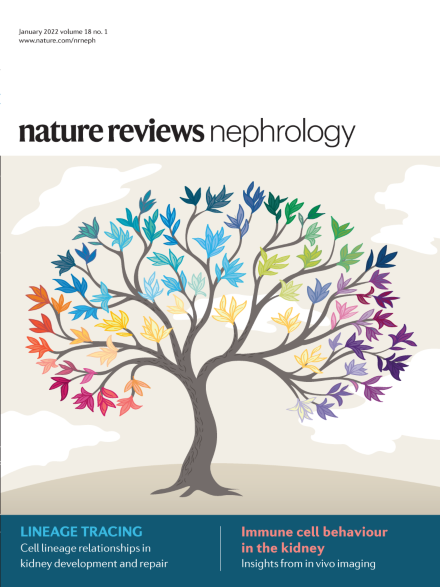尿液作为慢性肾脏疾病生物标志物和生物学知识的来源。
IF 39.8
1区 医学
Q1 UROLOGY & NEPHROLOGY
引用次数: 0
摘要
蛋白尿和肾小球滤过率的估计仍然是慢性肾病(CKD)患者的主要诊断和监测指标。虽然这些都是肾脏疾病的有用标记,但它们代表的是CKD的结果而不是原因,既不能在早期阶段检测疾病,也不能确定其病因,并且在指导治疗干预方面往往不是最佳的。相比之下,尿液中核苷酸、蛋白质、肽和代谢物的发现可以提供有关肾脏组织生物学和病理过程的丰富信息,从而代表了早期疾病检测、预后和治疗指导的潜在生物标志物的来源。尿液生物标志物的研究目前以反映组织损伤和修复、炎症和纤维化的蛋白质生物标志物的研究为主,并且可以在多标志物面板中组合使用。指导治疗的生物标志物数据很少,鉴于几种有效减缓CKD进展和改善患者预后的新疗法的可用性,强调迫切需要更有针对性的研究。因此,尽管目前有几种(主要是蛋白质)生物标志物被证明有改善疾病管理的潜力,但它们的临床应用受到缺乏临床和健康经济影响数据的限制,特别是关于泌尿生物标志物和CKD患者可用的最新治疗方法的联合使用数据。本文章由计算机程序翻译,如有差异,请以英文原文为准。
Urine as a source of biomarkers and biological knowledge in chronic kidney disease.
Albuminuria and estimates of glomerular filtration rate remain the main diagnostic and monitoring metrics used in people with chronic kidney disease (CKD). Although these are both useful markers of kidney disease, they represent the consequence rather than the cause of CKD, can neither detect disease at its earliest stages nor determine its aetiology, and are often suboptimal in guiding therapeutic intervention. By contrast, nucleotide, protein, peptide and metabolite findings from urine can provide a wealth of information about kidney-tissue biology and pathological processes, thereby representing a source of potential biomarkers for early disease detection, prognostication and therapeutic guidance. Urinary biomarker research is currently dominated by studies of protein biomarkers that reflect tissue injury and repair, inflammation and fibrosis, and can be combined for use in multi-marker panels. Data on biomarkers for guiding therapy are scarce, underscoring the urgent need for more targeted studies, given the availability of several new therapies that are effective in attenuating CKD progression and improving patient outcomes. Consequently, although several (mainly protein) biomarkers with evidenced potential to improve disease management are currently available, their clinical implementation is limited by the paucity of clinical and health-economic impact data, especially data on the combined use of urinary biomarkers and the latest therapies available for people with CKD.
求助全文
通过发布文献求助,成功后即可免费获取论文全文。
去求助
来源期刊

Nature Reviews Nephrology
医学-泌尿学与肾脏学
CiteScore
39.00
自引率
1.20%
发文量
127
审稿时长
6-12 weeks
期刊介绍:
Nature Reviews Nephrology aims to be the premier source of reviews and commentaries for the scientific communities it serves.
It strives to publish authoritative, accessible articles.
Articles are enhanced with clearly understandable figures, tables, and other display items.
Nature Reviews Nephrology publishes Research Highlights, News & Views, Comments, Reviews, Perspectives, and Consensus Statements.
The content is relevant to nephrologists and basic science researchers.
The broad scope of the journal ensures that the work reaches the widest possible audience.
 求助内容:
求助内容: 应助结果提醒方式:
应助结果提醒方式:


